
As the rage around AIG bonuses continues to grow, underscoring again the question of who benefits in an economic meltdown, we look at who is hurt the worst: communities of color around the country. A new report by the Center for Social Inclusion finds that communities of color continue to be disproportionately deprived of infrastructure spending, job creation and other key government services. The report’s authors call for the government to use some of the billions in federal stimulus money to focus on the needs of communities of color. [includes rush transcript]
Transcript
AMY GOODMAN: This weekend, AIG said it would pay $450 million in bonuses despite receiving a $173 billion bailout that’s given the US government an 80 percent stake. On Monday, the Treasury said it would withhold $165 million from the next installment of AIG’s taxpayer money.
The AIG controversy is the latest to exemplify the near-unfettered flow of government money to corporations that helped cause the financial crisis. As AIG uses the bailout to hand out bonuses, a new report says people of color continue to bear the heaviest burden in the current economic recession. According to the Center for Social Inclusion, communities of color continue to be disproportionately deprived of infrastructure spending, job creation and other key government services. The report’s authors call for the government to use some of the billions in federal stimulus money to focus on the needs of communities of color.
The report is called “One Region: Promoting Prosperity Across Race.” Maya Wiley is the director of the Center for Social Inclusion, joining us here in our firehouse studio.
Welcome to Democracy Now!
MAYA WILEY: Thank you, Amy. It’s a pleasure to be here.
AMY GOODMAN: Now, you focused on New York but see that as a microcosm of the country.
MAYA WILEY: That’s right. We focused on the New York metropolitan region, so that includes parts of Connecticut, New Jersey, New York, Westchester County, Long Island. And the reason we did was twofold. One, obviously, New York is a huge region of the country, and increasingly in this country, we have to look at regions in terms of how we build opportunity, because our jobs flow, our economies flow, and our people flow across our political boundaries of cities and suburbs. But it’s also critically important because if we look at the leadership in Washington right now, the New York delegation actually has an incredibly important leadership role to play. So if we can figure out how we implement some of these policies well in the New York region, hopefully we can become a model for how to do this well across the country.
AMY GOODMAN: So, what are your chief findings? How have communities of color been hardest hit, and what are the models to bring them out of the global economic meltdown?
MAYA WILEY: Well, I want to step back for a minute, because I think there’s one part of this meltdown story that is not getting told enough, although some people are starting to tell it. I mean, obviously everyone knows that we started in this crisis with the mortgage crisis. Well, 35 percent of subprime mortgage holders were actually eligible for prime-rate loans. 35 percent. So imagine if we had had a financing system where people actually fairly got the loans that they should get. Most of those are people of color. And even when you look at the expansion of the subprime industry, a lot of it was around the fact that communities of color didn’t have fair access to credit. So we’re in this mess in part because we didn’t look at the warning signs. The warning signs for our economy were in communities of color. We tend to be first — hit first and hit hardest.
So, as we look at, of course, how this crisis has played out, it’s played out across jobs. People are losing jobs. People are in danger of losing their homes, not just if they’re homeowners, but also if they’re renters, because the developers who own buildings are going into foreclosure, and those rentals are in danger. But, you know, what we really see is that we have to stimulate equality in order to stimulate the economy, and we have to do that nationally. So if we look at the parts of the country, the communities that are most impacted, that have the lowest opportunity, and we think about how direct investments there, there’s a lot of good social science that shows that we can build regional economies that way.
AMY GOODMAN: Following up on saying what proportion of the people who got subprime were eligible for prime, the NAACP has just sued the subsidiaries of Wells Fargo and HSBC for allegedly steering African American borrowers into subprime mortgages. NAACP is saying the banks were guilty of systematic institutionalized racism.
MAYA WILEY: Yeah, and I think it’s important that we look at that very closely, and the NAACP’s leadership on that is very important.
I mean, one of the things that we can do now, though — I mean, I think we have opportunities. We have an administration in Washington that’s actually starting to try to get money into the economy. It’s done that by looking at ways to get money into the hands of people who need it, in some important ways, from, you know, increasing Medicaid access, also looking at expanding unemployment insurance, food stamps. Those are all very important things to do. But we have to think about implementation. Those policies — for example, in New York — and this is also a problem nationally — we tend to have people who are eligible for those programs who don’t even know they’re eligible. Back in the summer, there was an important study that showed that in Brooklyn alone, 200,000 people were eligible for food stamps and not getting them. So that’s part of the story.
But the other is, we’re going to stimulate jobs through the recent stimulus act through construction, right? I mean, a big part of that is “shovel ready,” projects that are ready to start digging in order to get those construction jobs going, to get people working, to get money flowing into the economy. Well, blacks and women of all races are deeply underrepresented in the construction trades. So if we’re stimulating those jobs, we’re not actually stimulating jobs for the communities that have the highest unemployment rates, unless — unless — unless we learn from some of the lessons of cities like Los Angeles, where both the city and the unions really took leadership in making sure that they got tracked people of color, women into apprenticeship programs, so that when those construction contracts came, there were real community benefits. That’s the model that’s very important, and our implementers, our public officials that are going to be looking at stimulus implementation, should also be taking the leadership to demand, for example, that 30 percent of the jobs that are part of the construction jobs that are stimulated go to people who are living at poverty level at the time that they’re hired.
AMY GOODMAN: I’m always amazed when we hear unemployment numbers. They say they could hit double digits, when the unemployment figures for African Americans that are over 12.6 percent — in some communities, young black men at 50 percent.
MAYA WILEY: Correct. If you look at the demographic, particularly for black and Latino males between the ages of eighteen and twenty-five, those statistics can get as high as 50 percent in some communities. And I think nationally it’s in the high twenties. So we’re talking about communities where you literally have no economy that is supporting those communities.
AMY GOODMAN: What about examples from the past, in other cities like Houston, coming out of global meltdowns?
MAYA WILEY: Yeah. I mean, it’s critically important to say that we do have some models that have worked. I mean, again, I’m focusing a lot on Los Angeles, also San Francisco, Houston, places that have really recognized that they have to build equitably and invest in people, so taking the leadership to say, “How are we going to partner with unions to make sure that people get jobs? How are we going to ensure that some of the discretionary resources we have go to transit projects that are going to recognize where people are transit-starved? And how are we going to connect those people to job centers?” because our jobs are increasingly across regions. They’re not just in our local communities. So people have to have a way to travel.
You know, in the New York metropolitan area between 1935 and 2000, I think we added 1,600 miles of highway. Well, not only is that bad for the environment, low-income people, particularly people of color, don’t have cars. So that doesn’t provide a transportation system that ensures that people can connect to the jobs where they are.
AMY GOODMAN: What do you think is the most important issue you want people to take away from this discussion in terms of where we go from here, right now, when the stimulus plans are being made?
MAYA WILEY: I think that the two most obvious — there are many, but the two most obvious are: we must have community benefits agreements for construction jobs — we must ensure that when the government has construction contracts, it ensures that low-income people, people of color, women, are going to have their fair share of those jobs; and we must ensure that the way transit dollars — well, I should say “transportation” dollars — get spent go to transit and really go to the smart projects that are going to connect people who need jobs to places where there are jobs.
AMY GOODMAN: Maya Wiley, I want to thank you for being with us. Her report from the Center for Social Inclusion, we’ll link to that report [pdf] on our website at democracynow.org.

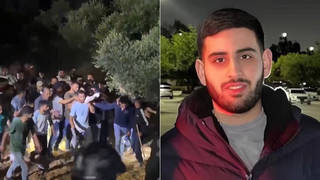
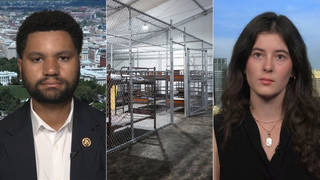
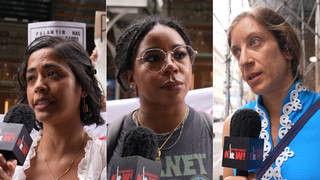
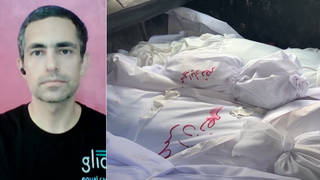
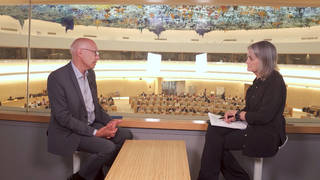
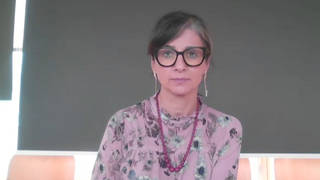

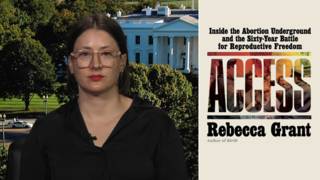




Media Options